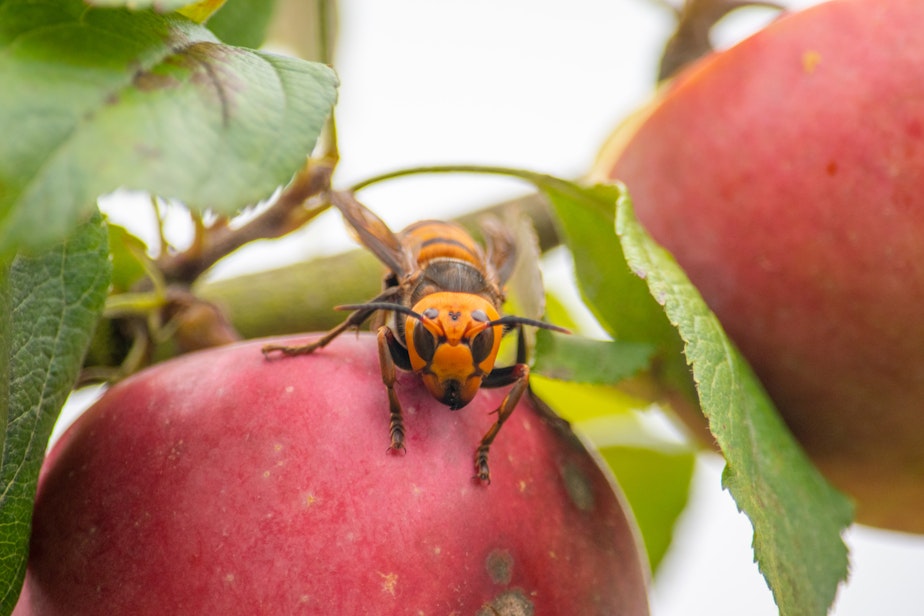How to hunt a 'murder hornet': Washington scientists capture and tag invasive bug

Scientists from the Washington Department of Agriculture have successfully captured a second, live Asian giant hornet.
They were able to tag the invasive hornet with the hope of finding its nest. If successful, they will move in to eradicate that nest.
So far, 18 giant hornets have been positively identified in Washington. Only two live hornets have been captured, including this one, in Whatcom County.
The Asian giant hornet is sometimes called a "murder hornet" for its impressive ability to kill its prey -- commonly bees, which is why local wildlife officials are concerned. The invasive species was first identified in Washington in December of 2019.
This time, they successfully attached a tracking device to the live hornet (see video below).
"We have these little devices that have a small Bluetooth chip on them along with an antenna and a small battery. And by using the radio signals that these things send out, we can track where they are in space," said Vikram Iyer, a PhD student at the University of Washington.
He was among the group that recently launched the technology, which is similar to Bluetooth devices that help people locate their lost car keys, for example.
Sponsored
"This is the same sort of approach that's used in traditional wildlife tracking for large animals," Iyer said. "But this is just shrunk down to a really small size."
From there, scientists can point their antennas in different directions until they get a signal from the tag while the hornet is on the move. And then the hunt is on.
Catch, release, and attack!
Unfortunately, the signal for this specific hornet was lost as she took off in a rural area near Blaine, Wash. But all hope is not lost.
Managing entomologist at the Washington State Department of Agriculture Sven Spichiger was on site when they released the tagged hornet.
Sponsored
"We had placed her on top of an apple tree. She did warm up; a very frisky individual," he said.
Eventually, the hornet started flying in a spiral, which is what they do when they are getting a feel for their surroundings.
"She immediately went to an adjacent tree, and we were able to locate her very quickly using tracking devices," Spichiger said. "She rested there for about five minutes and then moved to another patch of woods."
The scientists followed at each stop -- from tree-to-tree, eventually to a patch of ground, and some Blackberry bushes.
"...and then suddenly (she) took off," Spichiger said. The signal was soon lost, however.
Sponsored
Scientists hope to catch the signal again and track the hornet back to her nest, where they will destroy it using a combination of a vacuum system and carbon dioxide gas.
"We've actually tested this at night, the theory being that most hornets will be in the nest at night. We've decided that a dawn assault would be better," Spichiger said.
"Obviously, we haven't practiced it with giant hornets trying to sting us, but we have every confidence that the suits will protect us."
The search continues in rural Whatcom County. Luckily, Iyer notes, the technology they are using can be downloaded onto a smartphone. This allows locals to use their phones to see if they get a signal for the invasive hornets.
Officials ask that if you believe you have sighted one of the insects, to reach out to them to file a report at this link.

 1 min
Scientists in Washington state tag a live giant Asian hornet, commonly called a "murder hornet."
1 min
Scientists in Washington state tag a live giant Asian hornet, commonly called a "murder hornet."
Dyer Oxley contributed to this report.




